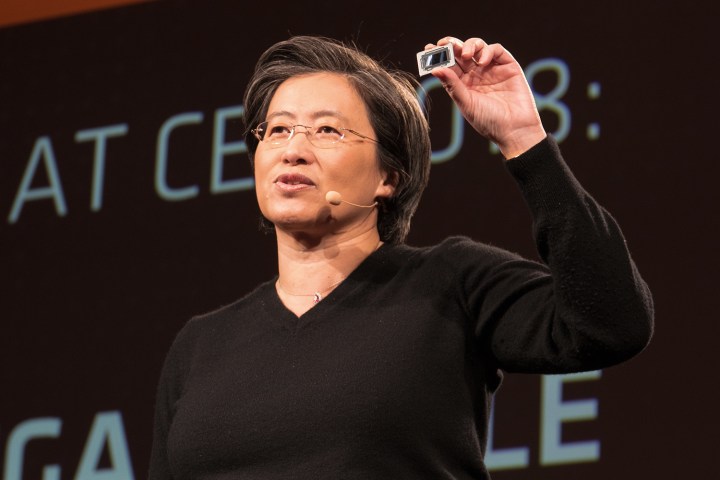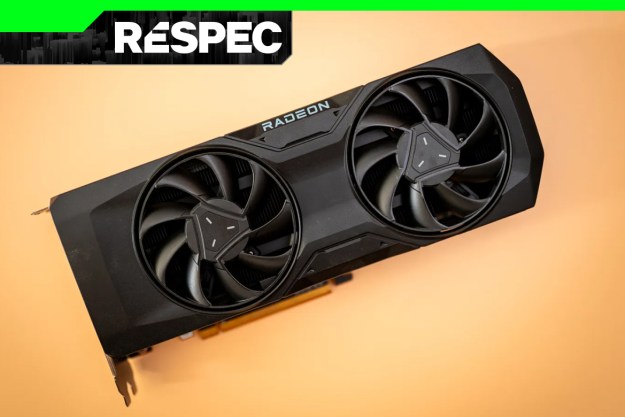
Ryzen takes a bow with its second generation
It seems like Ryzen was announced just yesterday, but AMD isn’t taking a break. Instead, it’s leaping right into the second generation of Ryzen. Now, don’t get too excited – this isn’t Ryzen 2, but instead a second generation of the original. That means the changes aren’t extreme. But neither is the wait! You’ll see these chips arrive as early as April of 2018.
Still, the second generation of Ryzen makes some notable improvements. It’s built on a new 12-nanometer production process (Ryzen is 14nm), which should net some improvements in efficiency. It’ll also offer Precision Boost 2, a series of technologies that try to optimize the processor’s performance and power draw.
It improves over Precision Boost with a more “opportunistic algorithm” and more granular power stepping. Or, to put it simply, the processor should run faster and for longer.
The second generation of Ryzen will launch alongside a new X470 chipset. It’ll still use the same AM4 socket, as promised, so owners of the older X370 chipset can upgrade to the new processors. You’ll also be able to use Ryzen second generation with some old motherboards. AMD says it’ll issue a “AMD Ryzen Desktop 2000 Ready” certification, so you’ll know which motherboards support the second-gen out of the box.
Little was said about the X470 chipset’s features. That information will be revealed closer to its launch.
Ryzen 3 chips get some help from Vega
AMD wasn’t ready to talk about any specific second-generation Ryzen parts, but it did unveil two new budget-friendly, first-gen options. It’s a pair of APUs: The Ryzen 5 2400G and the Ryzen 3 2200G, each with Vega graphics.
These chips will launch on February 12.
| Processor | Ryzen 5 2400G | Ryzen 3 2200G |
| Boost Clock/Base Clock | 3.9GHz/3.6GHz | 3.7GHz/3.5GHz |
| Cores/Threads | 4/8 | 4/4 |
| Compute Units | 11 | 8 |
| Price | $170 | $100 |
These are extremely affordable parts – the Ryzen 3 2200G is only $100. That gets you 8 Compute Units, while the Ryzen 5 2400G has 11. That’s not a lot. The Vega 56 and 64 are named after the number of compute units on each. But hey, even the 2400G is only $170, so what were you expecting?
AMD says the Ryzen 5 2400G will offer performance similar to an Nvidia GT 1030 graphics card, so most games should be playable at 1080p. The company’s even bold enough to call it the “world’s most powerful graphics on a desktop processor.” Which, of course, is accurate — AMD’s only real competition in that arena is itself. The chips will also be unlocked, like all Ryzen hardware, so owners can overclock the snot out of them, potentially netting gains of up to 40 percent with the right settings and a bit of luck.
The original Ryzen gets a price drop
While the second-gen is incoming, the original Ryzen processors are getting a price drop — well, most of them, at least. This includes a $100 drop on the Ryzen Threadripper 1900X, to $449, and a $150 price drop on the Ryzen 7 1800X, to $350.
| Processor | Original Price | New Price |
| Ryzen Threadripper 1900X | $550 | $450 |
| Ryzen 7 1800X | $500 | $350 |
| Ryzen 7 1700X | $400 | $310 |
| Ryzen 7 1700 | $330 | $300 |
| Ryzen 5 1600X | $250 | $220 |
| Ryzen 5 1600 | $220 | $190 |
| Ryzen 5 1500X | $190 | $175 |
Ryzen was already considered affordable, so a price drop is nice to see. The fact Threadripper now starts at $450 is a bit nuts. Remember, too — AMD has promised not to change sockets for at least a couple more years, so if you build a discounted rig now, you should be able to upgrade soon.
These price drops should be going into effect over the week of CES 2018, and may even be live by the time you read this.
Ryzen 3 mobile chips target $500 laptops
Laptops will see a pair of new APUs based on the original Ryzen architecture. These should appear in laptops coming over the first quarter of 2018, though AMD didn’t mention any specific laptop design wins to mention at its event.
Here’s the scoop on the two chips:
| Processor | Ryzen 3 2300U | Ryzen 3 2200U |
| Boost Clock/Base Clock | 3.4GHz/2GHz | 3.4Ghz/2.5GHz |
| Cores/Threads | 4/4 | 2/4 |
| Compute Units | 6 | 3 |
You don’t have to study these long to figure out they’re meant for inexpensive systems. The company mentioned it expects the first laptops with Ryzen 3 2300U to come in around $500. That’s not much at all for a quad-core laptop with Vega graphics.
Still, it’ll be wise to keep expectations in check. The Ryzen 3 2300U only has six compute units and the Ryzen 3 2200U has just three. By comparison, the Intel 8th-gen Core with Radeon RX Vega comes in flavors with 20 or 24 compute units. Laptops based on Ryzen 3 mobile will play games smoothly, but most titles will need to see settings reduced to low, and the most demanding games may only be enjoyable at resolutions below 1080p.
AMD also has plans to introduce Ryzen Pro for mobile in the second quarter of 2018. These chips will support enterprise-grade features, such as Windows 10 Enterprise support and a AES 128-bit encryption engine. There’s no pricing or release date for them yet.
Vega for mobile is such a tease
AMD launched into its event with a big announcement: AMD Vega mobile. The crowd went wild! Unfortunately, the company’s intent to produce it is all we really know. AMD says it’ll target ultrathin workstations and ultrathin
The tease was made more unbearable with the announcement of Radeon Instinct, a version of Vega that’ll target machine learning. It’ll be built on a 7nm production process and, if all goes well, should be AMD’s first product built on that process.
Otherwise, we’re in the dark. We don’t know anything about pricing, availability, or how AMD expects Vega for mobile to stack up against competitors. All we do know is that Radeon Instinct will begin sampling — that is, shipping to PC makers so they can finish product designs — sometime in 2018.
AMD’s road forward
Aside from the truckload of info you’ve already sorted through, AMD said a bit about its roadmap for the future. It’s all vague, of course, but it does offer a glimpse of where Ryzen and Vega are going.
On the CPU side, AMD expects the second-generation Ryzen in April, followed by Ryzen 2 in 2019, and Ryzen 3 in 2020. Interestingly, Ryzen 2 and 3 are both planned for a seven-nanometer production process. That’s a big leap from the 14nm process used in Ryzen!
GPUs are quicker still because, as mentioned, a seven-nanometer version of Vega is expected this year. It’ll be followed by a GPU architecture refreshed called Navi in 2019, and an unnamed next-generation architecture in 2020.
This is undoubtedly an aggressive roadmap. It’s not crazy to think AMD might deliver consumer CPUs built on a seven-nanometer production node before Intel – if all goes to plan. Whatever happens, it’s good to see AMD plans to keep the pedal on the floor.
Editors' Recommendations
- AMD Zen 5: Everything we know about AMD’s next-gen CPUs
- I tested Intel’s XeSS against AMD FSR — and the results speak for themselves
- I’ve reviewed every AMD and Nvidia GPU this generation — here’s how the two companies stack up
- Nice try, Intel, but AMD 3D V-Cache chips still win
- AMD vs. Intel: the rivalry has never been more fierce





